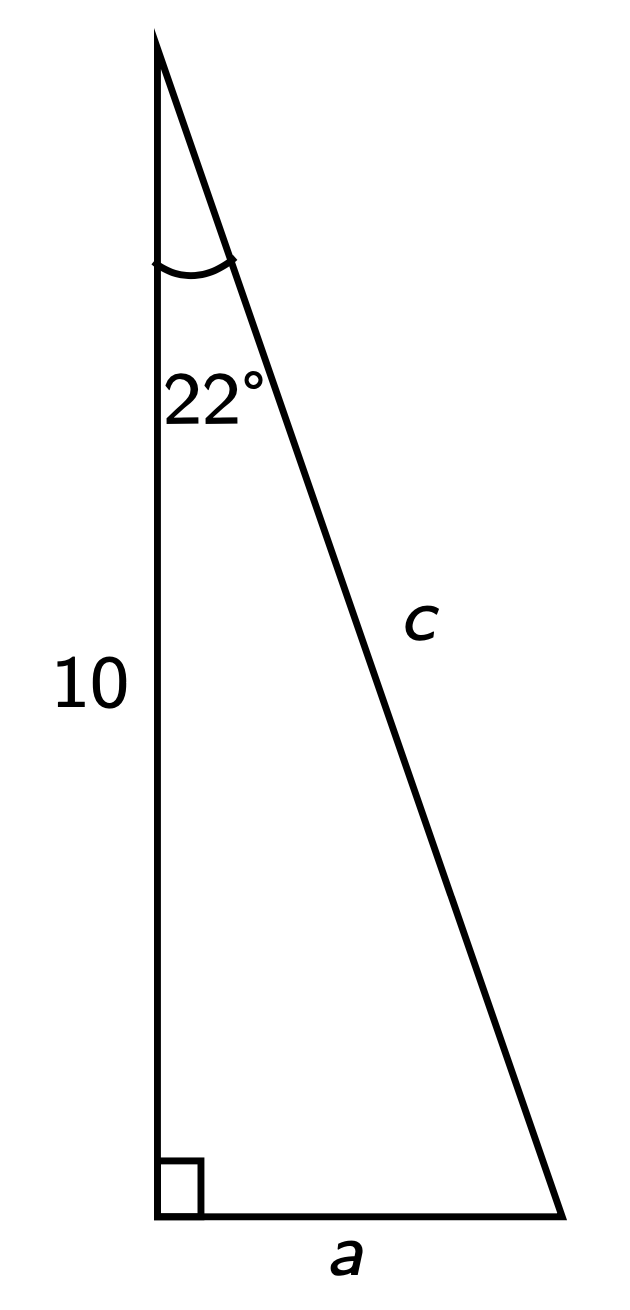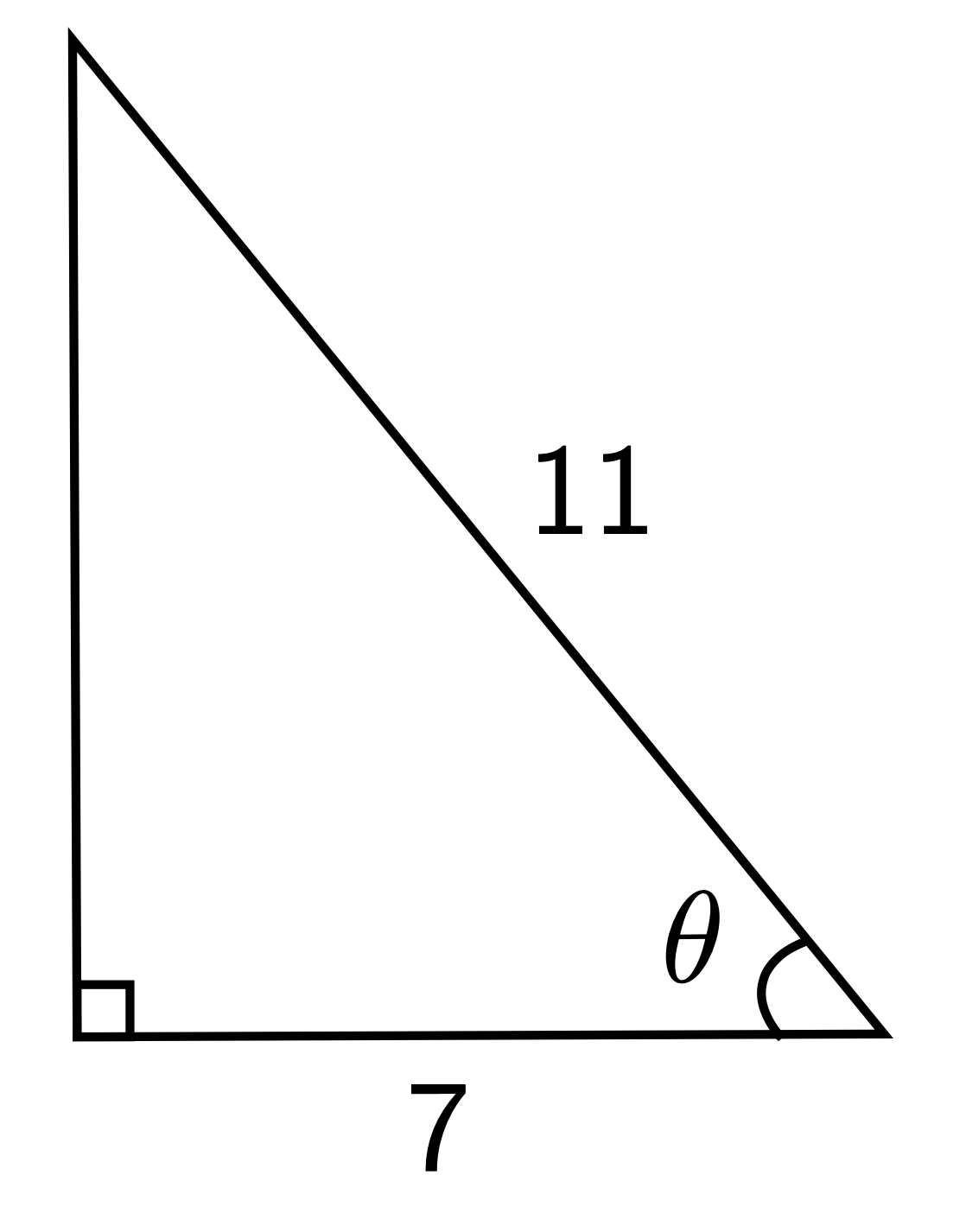Solution: \(\theta=\cos^{-1}\left(\dfrac{7}{11}\right)=50.5^\circ\)
Solution Method: In this problem, we will use an inverse trigonometric function to solve for the missing angle measure.
Our first step is to determine which trig function to use. We are given that the side adjacent to angle \(\theta\) has length 7, and the hypotenuse has length 11. Thus, we need a trig ratio that relates adjacent and hypotenuse side lengths
(think SOHCAHTOA): cosine.
Now, we set up the trig ratio with the values given in the problem.
\begin{equation}
\cos(\theta) = \frac{adjacent}{hypotenuse} = \frac{7}{11}
\end{equation}
To solve for an angle measure, given a trig ratio, we need inverse trigonometric functions. A trig function takes an angle measure and outputs a ratio of side lengths. Thus, an inverse trig function takes a side length ratio and outputs an angle measure. Mathematically, the six inverse functions are defined:
\(\sin^{-1}\left(\frac{opposite}{hypotenuse}\right) = \theta \)
\(\cos^{-1}\left(\frac{adjacent}{hypotenuse}\right) = \theta\)
\(\tan^{-1}\left(\frac{opposite}{adjacent}\right) = \theta \)
\( \csc^{-1}\left(\frac{hypotenuse}{opposite}\right) = \theta \)
\( \sec^{-1}\left(\frac{hypotenuse}{adacent}\right) = \theta \)
\( \cot^{-1}\left(\frac{adjacent}{opposite}\right) = \theta \)
Furthermore, each inverse trig function "undoes" its respective trig function.
So, to finish the problem above, we apply inverse cosine to both sides of equation (1),
\begin{align*}
\cos^{-1}\left(\cos(\theta)\right) &= \cos^{-1}\left(\frac{7}{11}\right) \\
\theta &= \cos^{-1}\left(\frac{7}{11}\right) \\
\theta &= 50.5^\circ
\end{align*}
Note 1: When using an inverse trig function in the calculator, your output will only be in degrees if you are in degree mode.
Note 2: The \(^{-1}\) notation for an inverse trig function is not to be confused for an exponent. This is why the reciprocals of trig functions have their own names. Another notation for inverse trig functions is "arc_____". E.g. "\(\sin^{-1}()\)" and "arcsin()" are both used as inverse sine.



